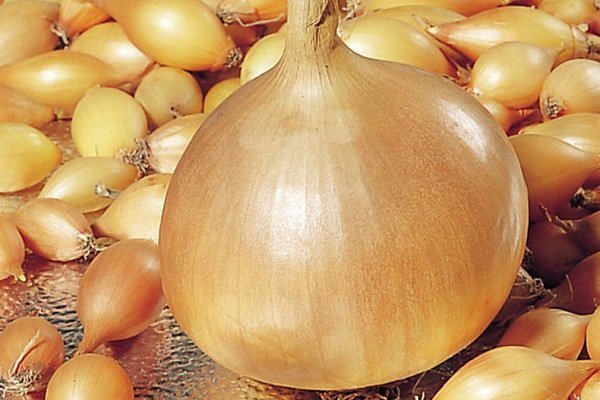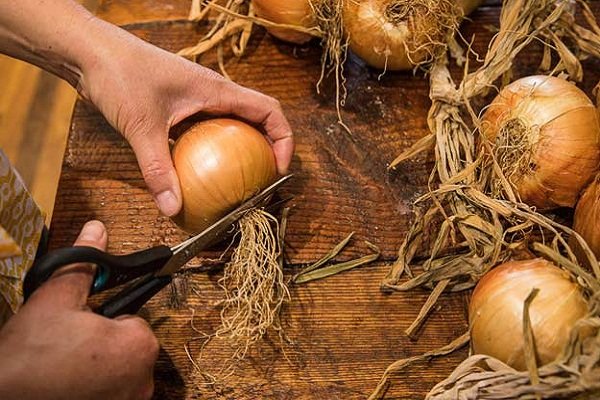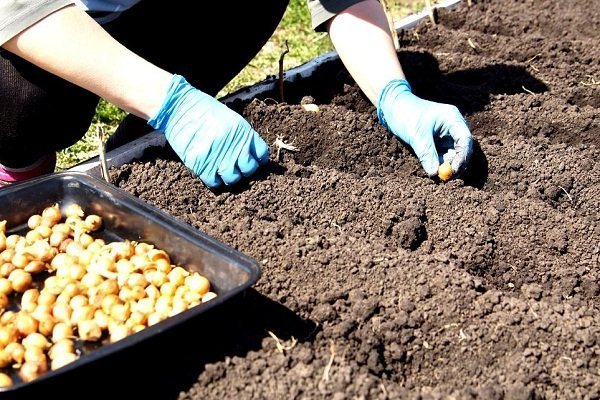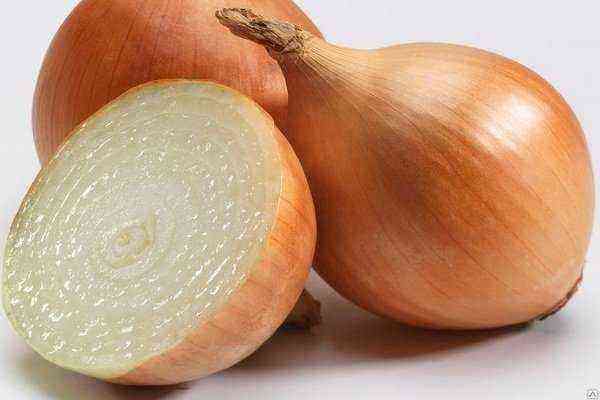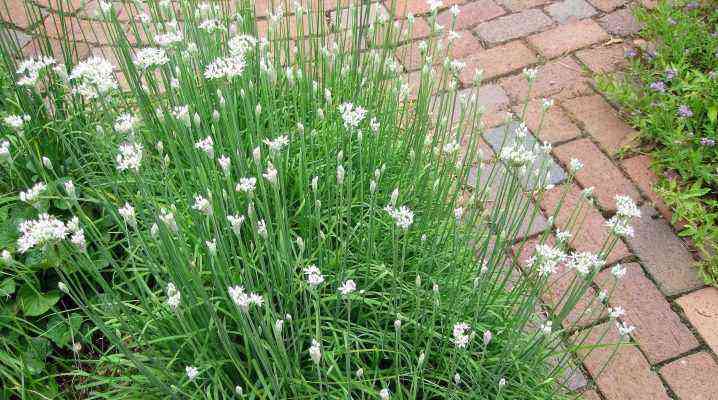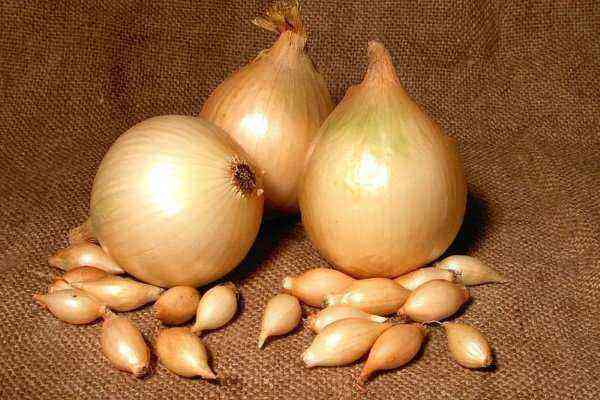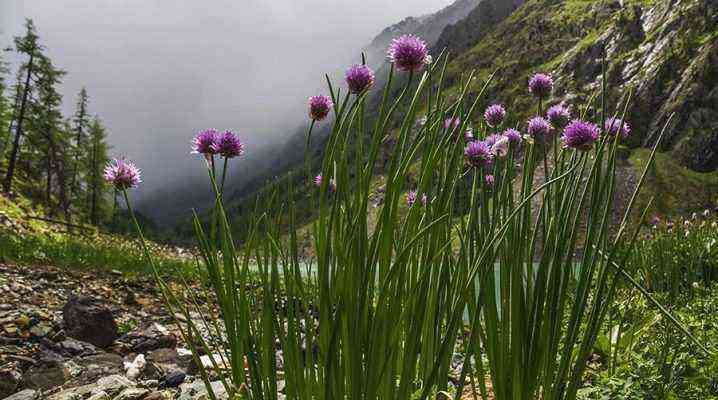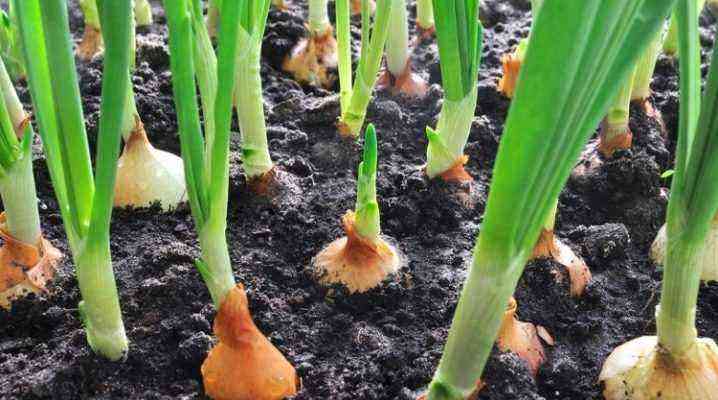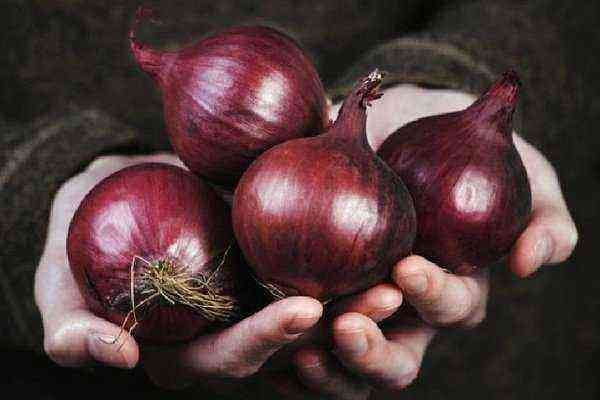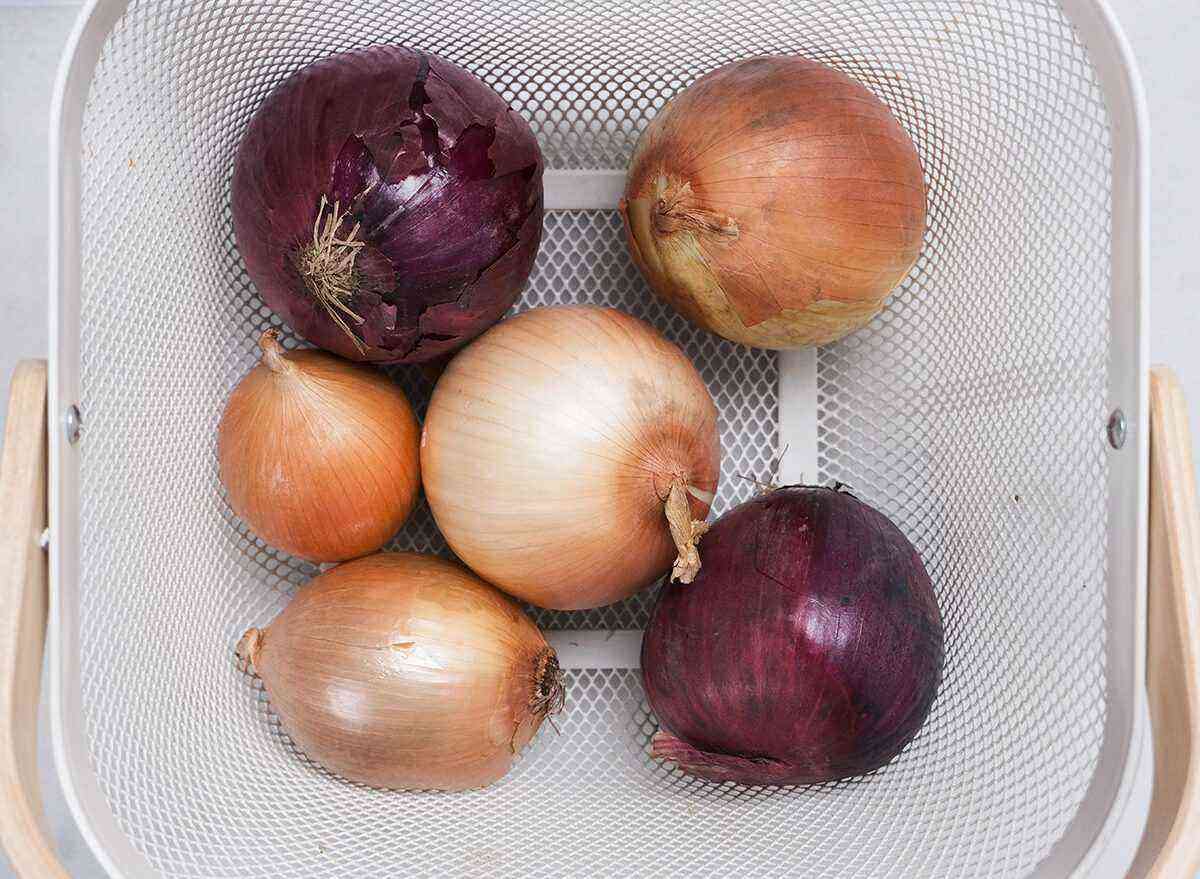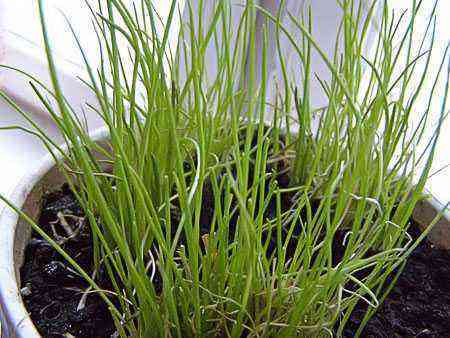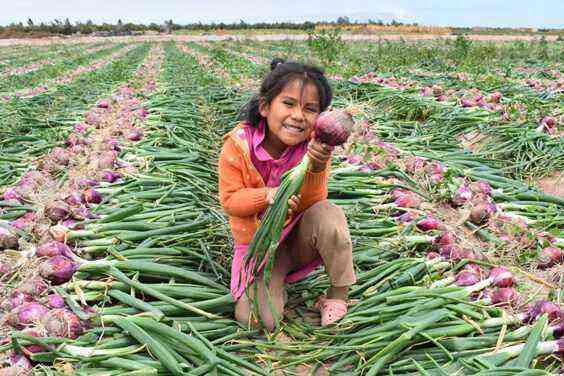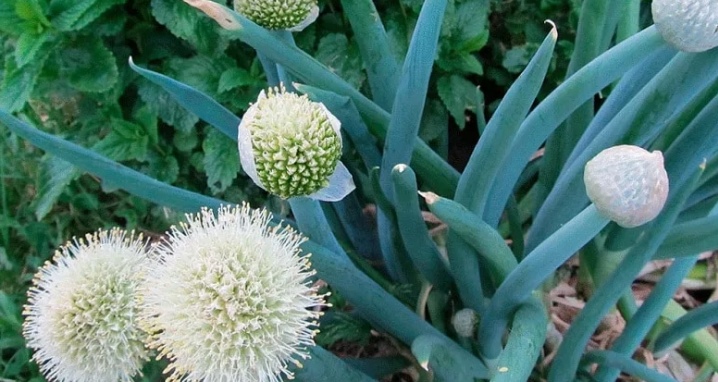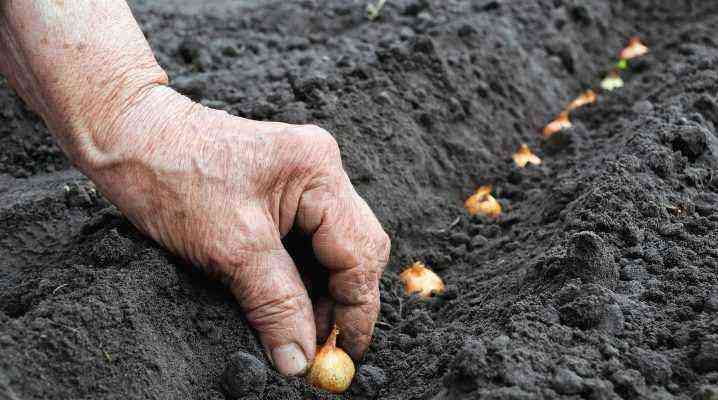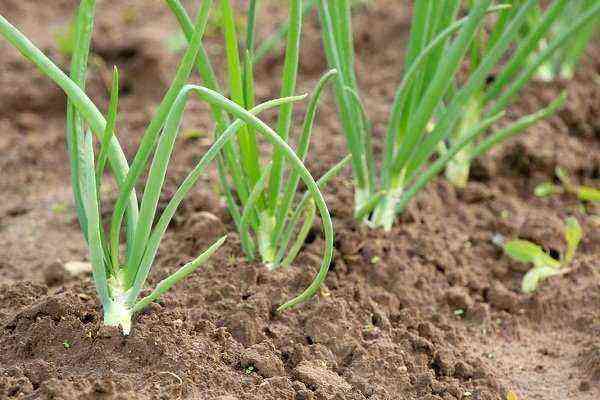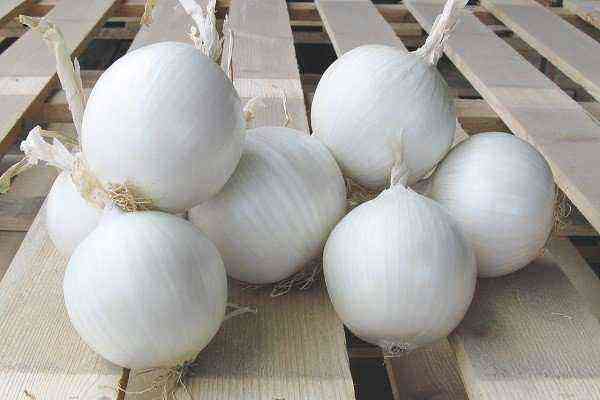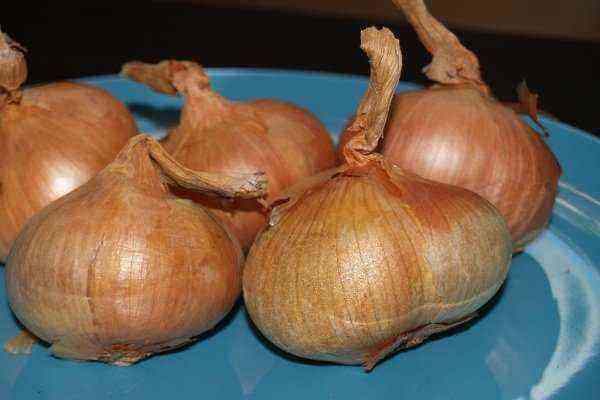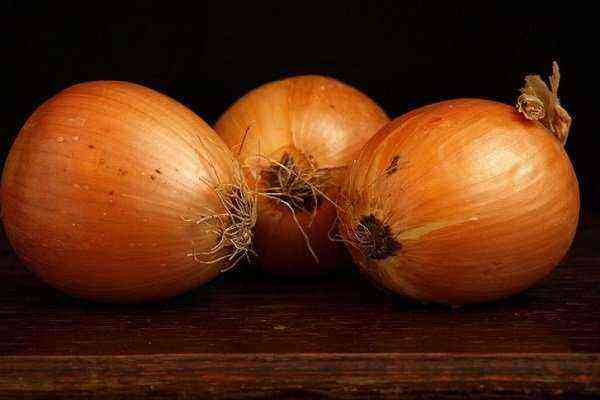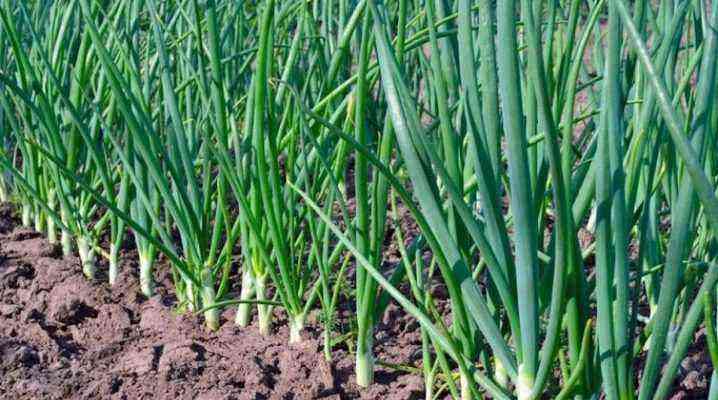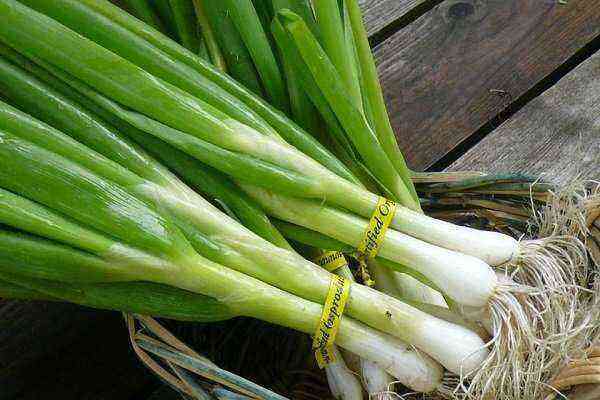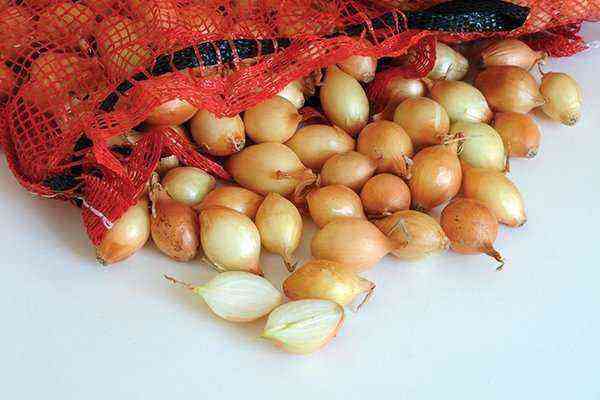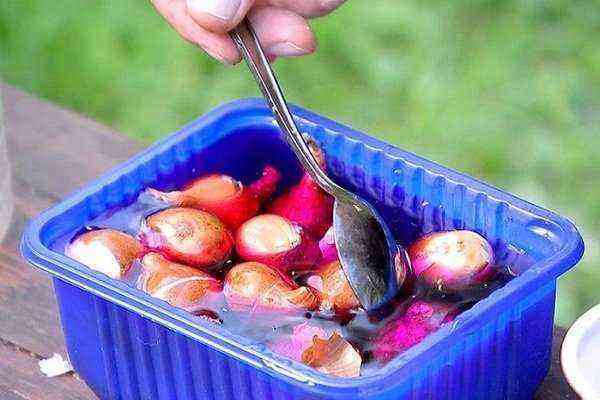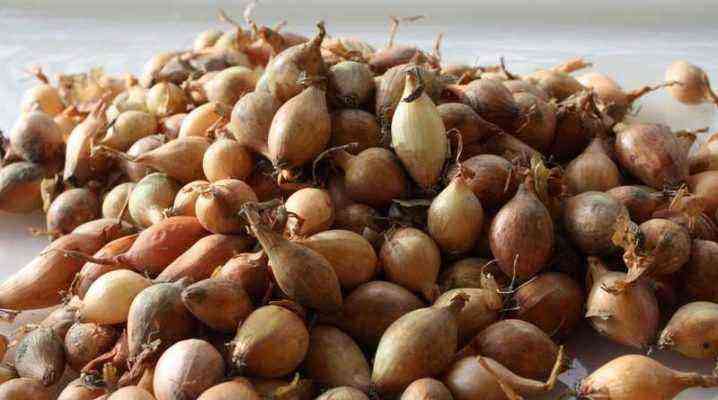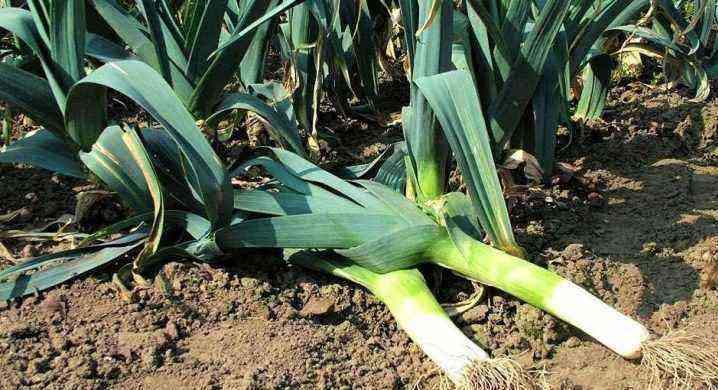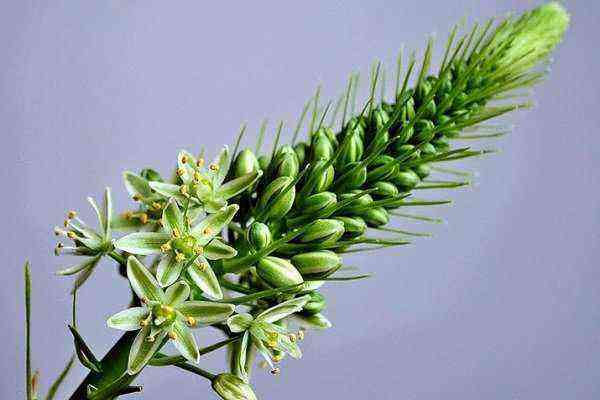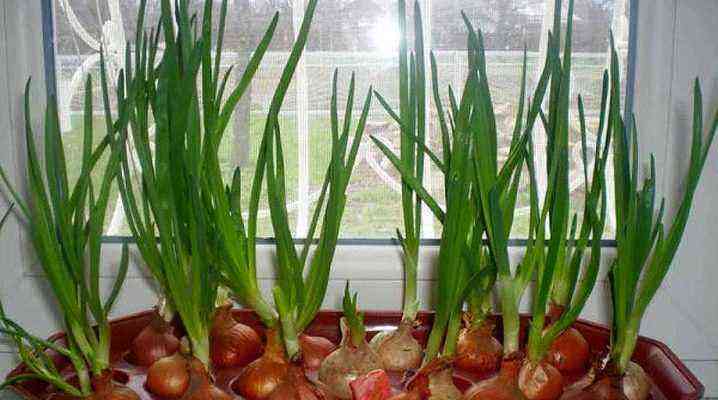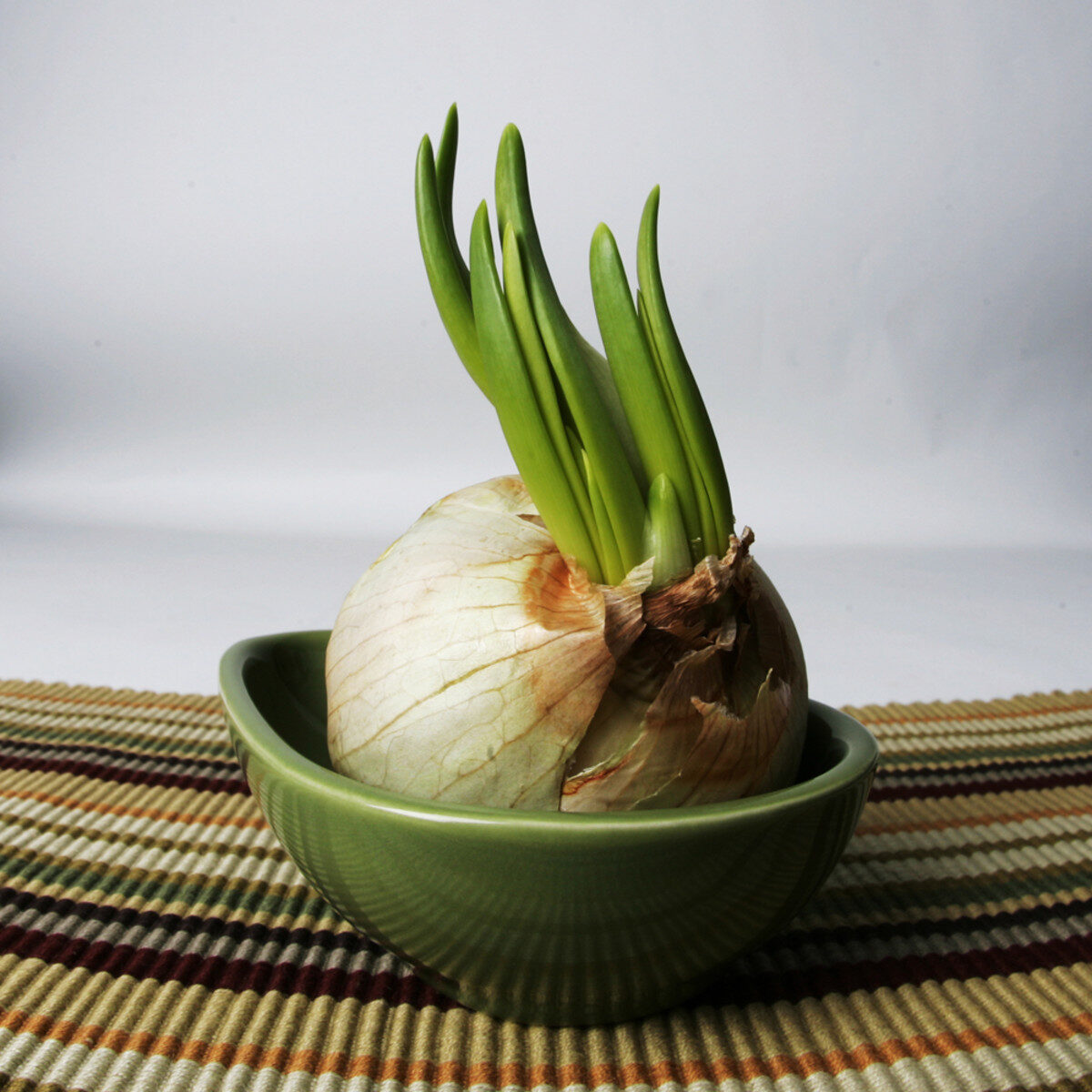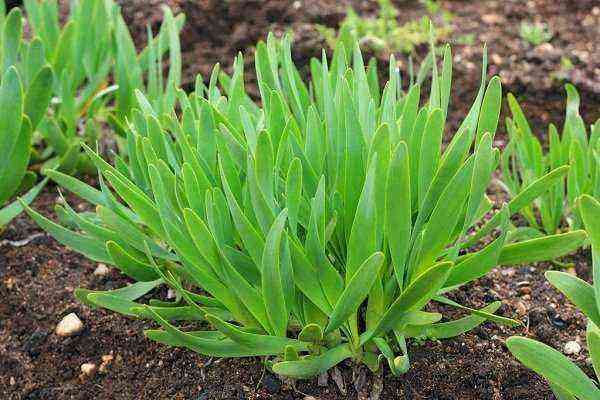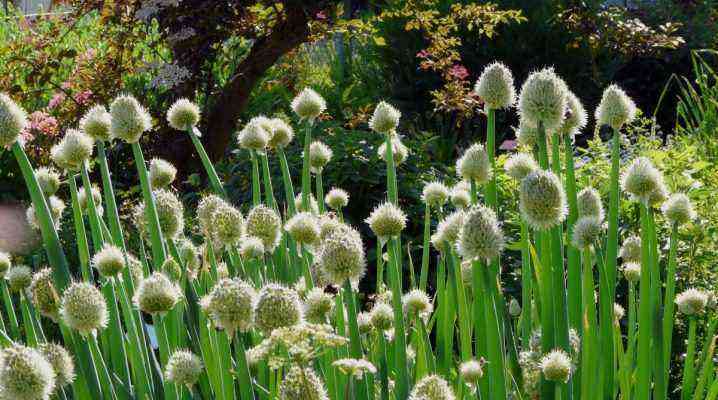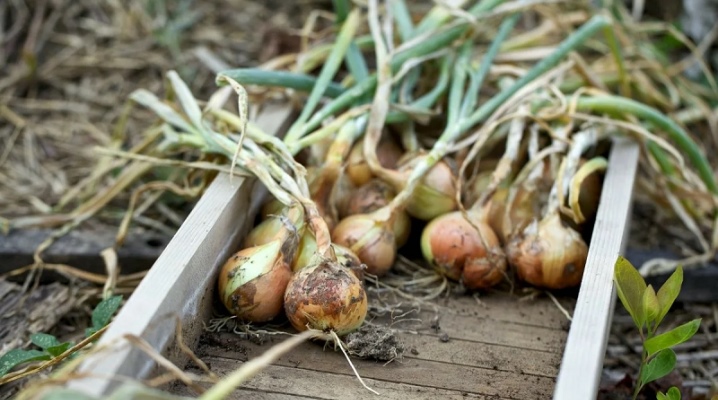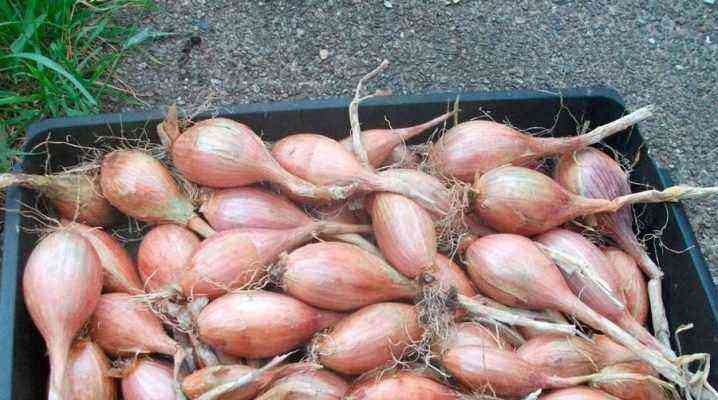Hercules is a hybrid variety of onions, which is recommended for cultivation in the central regions of the country. Onion Hercules has excellent characteristics and many advantages that are fully manifested when creating optimal conditions for the growth and development of the crop.
Characteristics of the variety, advantages and disadvantages
Hercules was bred by the Dutch and included in the State Register in 2006. Characteristics of this onion variety:
- mid-early ripening – after emergence, the harvest is expected in an average of 75 days;
- pen height – up to 35 cm, dark green color;
- the formation of a small number of leaves, which ensures large fruit sizes;
- the average weight of the bulbs is 140 g;
- golden yellow thick peel;
- bulbs of an elongated oval shape;
- white juicy pulp;
- sharp-sweet taste, bitterness is absent, there is a piquant aftertaste.
Hercules is a biennial crop. When planting seeds in the fall, you can get a set that needs to be planted in the spring to get a full harvest.
Hercules is a hybrid variety, and breeders have done a good job on its advantages:
- excellent taste;
- precocity
- high yield – from 1 sq. m you can get up to 8 kg of onions;
- the formation of a powerful root system;
- resistance to the formation of arrows;
- long-term storage without loss of taste characteristics;
- unpretentiousness regarding growing conditions – it grows successfully in arid regions, the yield is high even with rare watering;
- resistance to many diseases;
- An excellent option for commercial cultivation.
Hercules has few shortcomings. The main disadvantage is the high cost of planting material. Another significant drawback is the impossibility of obtaining seeds on your own, which you have to buy in the store.
Optimal growing conditions
The realization of all the advantages of the Hercules onion depends on the creation of optimal conditions for the culture:
- Sunny and elevated site. Culture does not like lowlands, if the whole garden is located like this, then the beds should be made high.
- Temperature conditions. Hercules should be planted in open ground when the air temperature is 8-10 degrees, and the threat of night frosts has passed.
- Rules of crop rotation. Within 3 years, the bow cannot be returned to its original place. The culture feels good after green manure, nightshade, cucumbers, cabbage. Garlic with carrots are undesirable predecessors, but good neighbors, repelling pests.
- The neutral acidity of the soil is pH 7.
Hercules prefers black soil and loamy soil. In the fall, when digging, the following fertilizers must be applied per 1 sq. m:
- urea – 1 tsp;
- humus – 4 kg;
- superphosphate – 1 tbsp .;
- peat – 5 kg.
If the soil is sandy, then other fertilizers are needed:
- clay soil – 2 buckets;
- urea – 1 tbsp. l.;
- humus – 1 bucket;
- superphosphate – 1 tbsp .;
- peat – 1 bucket.
Clay soil is not suitable for Hercules. Fertilization in other cases increases the fertility of the land.
During autumn digging, wood ash can also be added. Enough 0,5 kg per 1 sq. m. In this case, in the spring you need to use the following fertilizers:
- potassium – 15 g;
- humus – 0,5 buckets;
- superphosphate – 35 g.
Immediately before planting, it will be necessary to add urea to the soil – 15 g per 1 sq. m. Ammonium nitrate can be used instead, but 12 g for the same area.
Landing
Hercules can be planted with seeds or sevkom. It depends on the method chosen when the crop was obtained. Seeds are cheaper than sevka, but it will take longer to wait for the results, and more work to be done.
Seeds in open ground
Hercules should be planted with seeds at the right time:
- Winter planting is possible in any region except the Far North. Sowing is carried out at temperatures up to 5 degrees. This should be done 2-3 weeks before frost, the soil should be dry. Germination will begin in early spring.
- Early spring can be chosen for sowing, when the soil warms up to 3 degrees. Thanks to melt water, the crop will grow better, and the harvest will give a good one, but it will be stored less – no more than 3 months.
- Sowing at a soil temperature of 10-12 degrees provides onions of small and medium sizes. Basically, this is planting material for the next year, but some can be taken for food.
Regardless of the chosen time frame, you need to act according to the following algorithm:
- Check seed for viability. To do this, the seeds must be soaked in water. Floating specimens will not germinate, so they should be thrown out. It is recommended to leave a few seeds in water until germination and evaluate the ratio of hatched to non-germinated specimens. If there are more of the latter, then the quality of the seed is unsatisfactory, it is better not to use it.
- Warm up the seeds. To do this, they can be placed next to the battery or in another warm place and left for 5 days. Such a measure will reduce the shooting.
- Disinfection. At this stage, the seeds should be dipped in a solution of potassium permanganate for a quarter of an hour. After they need to be rinsed and dried.
- growth stimulation. This step is optional. Usually resort to the drug Epin. This biostimulant must be added to the water and the seeds soaked. You can also use this tool when landing.
- Prepare the beds. Digging is carried out in the fall, in the spring only loosening, leveling and applying the necessary fertilizers are required.
- Make grooves, deepening 1-1,5 cm. Leave 20 cm between rows.
- Sow the seeds. Leave 1,5 cm between them.
Hercules can also be planted as seedlings. Its cultivation takes 50 days, sowing should be carried out in mid-February.
Onion sets
Sevok is usually planted when the air warms up to 10 degrees, and the soil – 2 degrees less. You can plant it earlier, when the soil thaws at least 5 cm. This option allows you to quickly develop the root system and reduce the risk of damage by some pests. You should not be afraid of frosts – the sevok perfectly tolerates temperatures down to -4 degrees.
When landing Hercules sevkom, you need to act according to the following algorithm:
- Culling of planting material. Only strong specimens should be selected. Mechanical damage and signs of illness are unacceptable. It is recommended to sort the sets by size. Onions 2-2,5 cm in diameter are considered the best option. Smaller specimens are best planted in early spring or before winter.
- Warming up. It is necessary to place the sevok in a warm room and keep for 2-3 days. If possible, provide a temperature of 40 degrees – such warming reduces the risk of various diseases.
- Preventive treatment. To increase resistance to disease, you need to dissolve in 10 liters of water 1 tbsp. l. nitrophoska. Sevok in such a solution should be kept for up to half an hour, then dried. Additionally, copper sulfate can be used for processing – a solution is also prepared from it.
- Soil preparation, formation of grooves or holes. Leave 20-25 cm between rows.
- Planting sevka. Leave 10 cm between plants in one row. You need to deepen the sowing by 3-5 cm – there should be 2 cm of soil above the neck.
- Watering after planting is required only when the soil is dry. In spring, the crop lacks natural moisture in the soil.
You can also plant Hercules sevkom in the fall, if the winters in the region are not too severe. In this case, the harvest can be harvested in July. Planting is carried out 2 weeks before frost. The onion should not have time to germinate, otherwise it will die in the winter. When planting for the winter, you need mulch – dry grass or sawdust. A layer of 10 cm is enough.
Outdoor crop care
You can get a rich and selective harvest if you properly care for the plants. Measures must be comprehensive.
Watering
Hercules does not like excess moisture, so watering should be moderate, but regular. It is recommended to water the onions twice a week. In a severe drought, it is better to water more frequently.
For Hercules, it is better to use irrigation. Watering should be carried out in the early morning or evening, when the sun is already setting.
If precipitation falls regularly, then you need to focus on the condition of the soil and water the beds only when it dries.
Watering is especially important for the culture in the first weeks, when it is actively growing. Half a month before harvesting, watering is completely stopped.
Thinning
Such a measure is usually required when planting onions with seeds or seedlings. It is necessary to thin out the culture in two stages. The first thinning is carried out on the second week after planting. The distance between the shoots should be reduced to 2,5 cm.
The second thinning is carried out a month after planting. This time, the distance between adjacent sprouts should increase to 8-10 cm.
When thinning, only the strongest specimens should be left. They should not lie on the bed – all plant residues must be removed immediately.
Loosening and weeding
It is necessary to loosen the soil to ensure its aeration. At the same time, the culture begins to grow better. Loosening is carried out after watering or heavy rain.
Simultaneously with loosening, weeding is recommended. Weeds must be removed in a timely manner, otherwise it will slow down the growth and development of onions. In this case, the quantitative and qualitative characteristics of the crop will suffer, the bulbs will be small.
Feeding
Top dressing is not an obligatory step in caring for Hercules, but in its absence, the yield is reduced to 5-6 kg per 1 sq. m. It is recommended to feed the culture three times per season:
- 2 weeks after planting it is recommended to use organic. Chicken manure is effective – you need to add 0,2 kg of fertilizer per 10 liters of water. Additionally, 20 g of urea can be used.
- One week after planting it is better to use complex top dressing. For 10 liters of water, 20 g of ammonium nitrate, 15 g of potassium chloride and 60 g of superphosphate are required.
- During bulb ripening the same fertilizers should be used as for the second top dressing.
Mulching
Mulching is carried out to reduce the growth of weeds, and the land does not dry out less. The best mulch for Hercules is compost. The mulch should be updated several times during the season, its layer should not exceed 7 cm.
Fighting diseases and pests
Hercules has a high resistance to various diseases, and disinfecting and heating the seed further reduces their risk. If signs of the disease still appear, then it is necessary to get rid of the affected plants and burn them. Usually the problem is fungal infection, so fungicides must be used.
The main enemy of culture among pests is the onion fly. You can get rid of it with the help of tobacco dust, which plants are dusted with. Effectively add ash and black pepper. You can prepare a solution from a dry mixture and spray the culture with it.
Harvesting and storage of crops
Hercules harvest occurs at the end of summer, when the feather turns yellow and lodges en masse. The onion should not sit out in the ground, otherwise it will be stored less.
The crop should be harvested with a pitchfork. The bulbs must be cleaned from the ground and completely dried in the sun or in a well-ventilated area.
Be sure to cut the roots and feathers, leaving tails of 5 cm. You can store the crop in nets, wooden boxes, cardboard boxes, nylon stockings, bundles.
The optimum storage temperature is 15-20 degrees. The room should be dry, dark and well ventilated.
With the proper cultivation of Hercules onions, the result of labor will be a rich harvest of large onions, which will be stored until spring. The duration of storage largely depends on the timeliness of cleaning work and the competent preparation of a suitable room.
